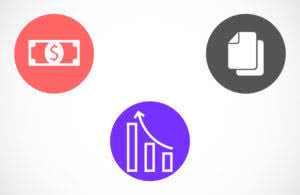Content
Every nonprofit incurs overhead expenses to help fund and operate the organization. These expenses include things like payroll, rent, utilities, contractors, fundraising costs, and more. However, many donor prospects and watchdog organizations compare overhead and programming expenses as a shorthand for a nonprofit’s health, effectiveness, and perceived credibility. Use the calculators in this guide to see where your nonprofit stands for these popular ratios.
- If this is the first time you’re reviewing your own nonprofit financial ratios, you can use the calculations you found here as a starting point for your organization.
- Several financial ratios are commonly used in working capital management to assess the company’s working capital and related factors.
- Working capital is the amount of available capital that a company can readily use for day-to-day operations.
- Working capital includes only current assets, which have a high degree of liquidity — they can be converted into cash relatively quickly.
- The ratio puts the dollar amounts we see on the balance sheet into perspective.
- Positive working capital means that the business is able to pay off its short-term liabilities.
One way you can handle debt management is by attracting customers who can increase your revenue while offsetting your cash flow. In addition to making purchases more inviting and increasing your short term sales, you can move out-of-stock inventory and reward valuable customers. For new businesses or those about to launch, working capital has a slightly different meaning. It refers to the amount of money you will be borrowing from the bank or a similar lender to keep your fledgling operation going until such time as your revenue is able to cover those expenses. Your start-up money will secure a facility, pay utilities, purchase inventory and equipment, and pay salaries during those first months when very little is coming in as revenue. Calculating the amount that you need to borrow during this interim period is a little tricky for several reasons, and many companies fail because they borrow too much or too little at this launching point.
Nonprofit Financial Ratios: Definitions & Calculators
Are there other ways that you can minimize business expense without devaluing your employees, which could produce the very opposite and negative results? As you improve your capital position your change in needs can lower the cost of capital due to a lower perceived risk in lending your business money. A Cash Conversion Cycle measures the total days from your cash outlay for the raw materials for your product until the day you receive your customer’s payment for that product.
It is a proportion of an organization’s transient liquidity and is significant for performing financial analysis such as monetary investigation, monetary demonstration, and overseeing income. This can increase cash flow, reducing the need to draw on working capital for day-to-day operations. The inventory turnover ratio indicates how many times inventory is sold and replenished during a specific period. It’s calculated as cost of goods sold divided by the average value of inventory during the period.
If Sales to Working Capital increases over time:
While you are thinking about insurance, you might review your company’s health plans to see if there is room to shave off some expense there. Working capital turnover measures how effective a business is at generating sales for every dollar of working capital spent. We recommend tracking how your ratio changes over time and to compare your ratio to that of other companies in the same industry. Doing so will show you how you compare against your competitors and will push you to optimize how you use your working capital for peak efficiency. This ratio gives a company an accurate idea of how much money is available to put towards operations after all debt has been paid . A working capital ratio of less than 1 suggests potential liquidity issues, while a working capital ratio of more than 3 suggests that assets aren’t being utilized properly.

Working capital is the amount of money that a company can quickly access to pay bills due within a year and to use for its day-to-day operations. In dividing total current assets by total current liabilities, you’ll find out how much of your current liabilities can be covered by current assets. A result greater than one signals that you are in a strong position to pay off current liabilities.
How do you calculate the working capital turnover ratio formula?
When that happens, the market for the inventory has priced it lower than the inventory’s initial purchase value as recorded in a company’s books. To reflect current market conditions and use the lower of cost and market method, a company marks the inventory down, resulting in a loss of value in working capital. Peggy James is a CPA with over 9 years of experience in accounting and finance, including corporate, nonprofit, and personal finance environments. She most recently worked at Duke University and is the owner of Peggy James, CPA, PLLC, serving small businesses, nonprofits, solopreneurs, freelancers, and individuals. In most cases, a current ratio that is greater than 1 means you’re in great shape to pay off your liabilties. Ultimately, a “good” current ratio is subjective and depends on your business and the industry in which you operate.
To calculate working capital, subtract a company’s current liabilities from its current assets. It represents a company’s liquidity, operational working capital ratio calculator efficiency, and short-term financial health. The savings indicator ratio measures your nonprofit’s ability to add to its net assets.
What is an example calculation of the working capital ratio?
In today’s economy, it is still possible to borrow for a new business, but you will really have to do your homework to be taken seriously without being taken advantage of. Your working capital is used to pay short-term obligations such as your accounts payable and buying inventory. Even very profitable businesses can run into trouble if they lose the ability to meet their short-term obligations. The calculator assists you in determining working capital needs for the next year. Enter the current assets and current liabilities into the calculator to determine the working capital ratio of a business.
Is low working capital good?
Low working capital can often mean that the business is barely getting by and has just enough capital to cover its short-term expenses. However, low working capital can also mean that a business invested excess cash to generate a higher rate of return, increasing the company's total value.
Is money being squandered in the day-to-day expenses of running your company? If you find inefficiency, you will usually also find wasted cash assets. Working capital is the difference between a company’s current assets and current liabilities. It is a financial measure, which calculates whether a company has enough liquid assets to pay its bills that will be due within a year.
Formula for Working Capital
It can also pinpoint potential areas of trouble before they become a major impediment to the health of your business. Your working capital provides you with the information you need in order to know whether you’ll be able to fulfill all of your financial https://intuit-payroll.org/ obligations for the upcoming year or need to make changes. The only difference between working capital and net working capital is how they’re reported, as net working capital usually refers to a total, while working capital is reported as a ratio.
Is negative working capital good?
Negative working capital is generally seen as a bad thing. On the surface your short term available assets simply won't cover your short term debts. It means you might have salaries to pay and not enough money to pay them!
All such information is provided solely for convenience purposes only and all users thereof should be guided accordingly. A working capital ratio somewhere between 1.2 and 2.00 is generally considered good. Although C. C. D. Consultants Inc.’s personnel has verified and validated the Working Capital calculator, C. C. D. Consultants Inc. is not responsible for any outcome derived from its use.
